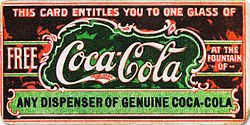Who “owns” social platforms? The user or the platform? The answer is both obvious, and yet not.
Clearly the developer of the platform (and its shareholders) own the business and its intellectual property. Deciding who owns the experience is a wee bit harder. Without the engaged users, there is no experience. In that respect the users are just as invested in the platform as its nominal owners.
This tension can sometimes get ugly. Nearly every time Facebook changes its terms of service, interface or algorithms, the users get restless, threaten revolt etc.

But what happens when a change in and enforcement of the terms of service impacts the business of its users. As when Facebook restricted sweepstakes and contests a few years ago. Restrictions it has since loosened. Or when Pinterest began applying daily pin limits to minimize spam and revising and enforcing its guidelines for contests and sweepstakes that involve Pinterest.
On some level, the platforms rely on creative users to experiment with business models to surface interesting ways of leveraging the platform. Is it then fair when the platform asserts its marks (pin, pinning), chooses to limit an activity (number of pins per day) or restricts something to itself alone as Facebook did with “advertising.” Perhaps not, but no one ever promised fair.

When you build your business on the back of someone else’s platform, you run the risk — always — of the platform making changes that impact your business. For example, when Pinterest asserted its claim to the concept of digital pins and pinning and signaled intent to enforce, a number of companies building third party Pinterest tools that used Pin in the name rebranded. Pingage became Ahalogy. Pinerly morphed into Reachli.
And last month, blogger Amy Lupold Blair was requested to not enforce a trademark she had registered for “Pinning Party” and to comply with Pinterest’s terms of service guidelines for sweepstakes and contests.
I am not a lawyer, nor do I play one on the Internet, and my purpose for sharing this example isn’t to overanalyze it or decide who is “right.”
Because it doesn’t matter. Pinterest has a terms of service, and reserves the right to change its TOS at any time. If you want to use the service, you have to play by its rules.
The company also has to be consistent in its enforcement of its TOS and defense of the claim to the concept of the digital pin. That means pinning only happens on Pinterest and no other business entity can own pin/pinning in a digital context. It may seem draconian when applied to a loyal user like Amy, but if Pinterest doesn’t assert its claims consistently, it sets dangerous precedent for when it tries to assert against the inevitable copycat platforms.
I’m far more interested in exploring how we can use social platforms in our marketing and business offerings without getting tripped up by the inevitable tension of who owns what. Here are a few thoughts. Your Mileage May Vary.
- Build your offering on something you can own independent of a platform. It can certainly leverage a platform but for maximum flexibility, the underlying concept should be portable. This is why content-based plays are so powerful. The “product” is the story. The platform is simply the conduit.
- If you have a great idea for technology play on top of/relying on a single platform, be honest with yourself. Are you a bleeding edge first mover? Or is your idea a breakthrough for the platform? Then it’s possibly worth trying to position you/your idea/your company as an acquisition candidate quickly. Whether the platform wants to leverage your technology, get you out of the way or both, this is a strike-fast play.
- An independent technology concept that might plug into multiple platforms is also a decent bet, but again first mover or breakthrough has an edge, and shopping yourself may take longer than you have funds. Your idea needs to have legs on its own. Does it really fill an unmet market need?
- Pick a name for your product/service/company that you can own. You can’t own another’s trade or service marks, so don’t use ’em. Very few companies will be as lenient as Twitter when it comes to use of their name in your name. As we’ve learned with Pinterest, that a term is a generic like “pin” isn’t enough to rely on if the company can prove that use of the generic term in the specific context is something it created beyond the generic meaning.
And you know that just because a domain name is available, that doesn’t mean the name is, right?
For most bloggers, the content-based play is the simpler choice. It allows you to build on your strengths as a storyteller without being married to a platform. Your power is in your story, and in who cares to read it/engage with it/converse about it. Not in how you share it.
Bottom line: don’t build your empire — however large or small –on someone else. Build it on YOU.
Related articles
- How Pinteresting (360degreesofadvertising.wordpress.com)
- Nordstrom Will Use Pinterest To Decide What Merchandise To Display In Stores (JWN) (businessinsider.com)





